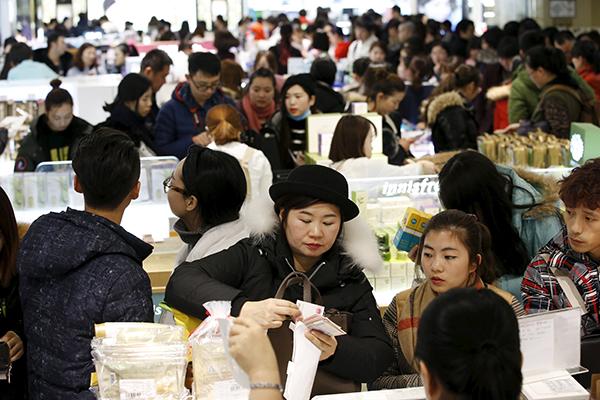 |
|
A Chinese tourist pays cash at a Lotte duty free shop in central Seoul, South Korea. [Photo/Agencies] |
The headlines are flattering.
Countries across the world are going the extra mile to lure Chinese tourists, offering multiyear visas and an array of services that make them feel at home.
And rightly so.
Over the past few years, Chinese tourists have emerged as the highest-spending visitors in the world, overtaking German travelers. They have been propping up the economies of cities and towns, big and small.
According to Brand USA China Market Update for 2014, an average Chinese tourist spends between $6,000 and $7,200 per trip to the United States.
In 2003, a mere 200,000 Chinese tourists visited the US. That number has grown exponentially since then, reaching almost 2.2 million in 2014 and 2.7 million in 2015.
Data from other countries also show similar growth.
In Australia, Chinese tourists have become so critical to the economy, the government said this month that their spending accounted for 6 percent of the growth last year.
Such is the power of Chinese travelers, there is even a Germany-based organization dedicated to studying outbound tourism from this country.
It has also become fashionable for Chinese companies to take thousands of employees on corporate jaunts to beautiful locales.
While China's outbound tourism scales new heights, the inbound market remains stagnant. There is still plenty of room for growth.
Figures released by the China National Tourism Administration show just under 26 million foreign tourists visited the country in 2015, a drop of 1.4 percent from the previous year.
Ironically, 2015 was the year the UN World Tourism Organization said "international tourism reached new heights" with an annual growth of more than 4 percent and global arrivals hitting nearly 1.2 billion. Arrivals in the Asia-Pacific region rose 5 percent reaching 277 million, UNWTO said.
What is hindering the growth in inbound tourism then?
